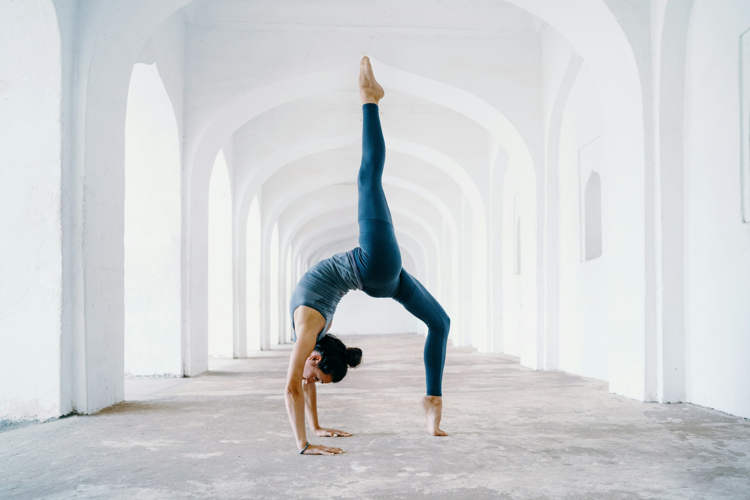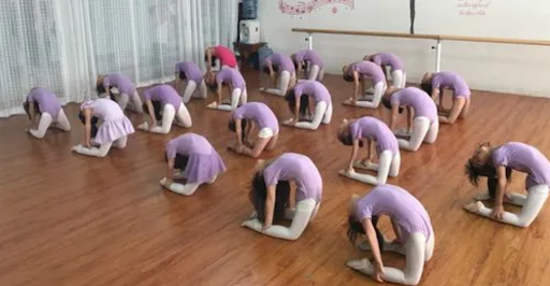The backbend is considered a crucial move in Chinese folk dancing, but it is also the main cause of severe spine cord injuries in children as young as five, leaving thousands of them paralyzed for life.
Ironically, the vast majority of parents pushing their beloved children towards folk dancing have their offspring’s best interest in mind, hoping to improve their physical fitness and overall health, but studies have found that one particular move taught in folk dancing schools is putting children’s lives at risk. Data analyzed by the Chinese Orthopaedic Association showed that the percentage of spinal cord injuries caused by the backbend exploded from just 4% between 1992 and 2002 to a whopping 33.9% of all pediatric spinal injuries between 2015 and 2019. Other reports show that, since 2005, over 1,000 children have been left paralyzed after doing backbends in dance classes, making this move the single greatest paralysis threat for young Chinese children.

Photo: Oksana Taran/Unsplash
“It is not recommended that dance instructors apply external pressure to a child’s lower back, which especially goes for children between the ages of 4 and 6, the age group most prone to dance-related injuries,” Dong Daier, an instructor at Beijing Dance Academy warned in a Douyin (TikTok) video. “Risky moves, including the backbend, are not meant for beginners and experienced teachers should know that; it’s a matter of common sense. Flexibility training should be built up over time, with shorter practice times and lower intensity in the initial stages.”
Unfortunately, the popularity of folk dancing in China attracted a large number of inexperienced teachers who simply don’t understand the dangers of having young children practice moves like the backbend. Doctors warn that while children’s spines are indeed very flexible, the same cannot be said for the spinal cord, which cannot adapt to the excessive stretching that is caused by significant changes in posture.
“For instance, a newborn’s spine can be stretched and lengthened by up to two inches without rupturing. However, the spinal cord can only withstand about a quarter inch,” Dr. Guo Xiaodong, director of Orthopedics at Wuhan Union Hospital, told Sixth Tone. “Continuous or repetitive bending movements, as well as movements that repeatedly overextend the spine, are particularly dangerous and can easily lead to spinal cord injuries.”

Most backbend-related injuries are classified as pediatric acute hyperextension spinal cord injury (PAHSCI), a condition so often associated with this so-called basic dance move that it is commonly known as “backbend paralysis”. Approximately 70% of patients with PAHSCI suffer severe injuries for which there is no treatment, leaving them confined to wheelchairs for the rest of their lives.
According to Dr. Guo, children who suffer spine cord injuries while practicing the backbend have a four-hour “golden window” to seek medical help. Unfortunately, because the initial symptoms are only mild pain and discomfort, most of them continue to engage in physical activity, thus increasing their risk of paralysis.
“If a child feels physically uncomfortable while practicing backbends, they should stop immediately and lie down to rest, “Dr. Guo said. “If the child feels better after resting for a while, they should continue to rest, but standing up and walking are not recommended.”
Last year, a number of studies and media reports sparked a heated debate about the backbend as a seemingly crucial part of folk dancing classes. Many teachers have since understood that it is not appropriate for young children whose spinal structure is not fully developed, and only recommend the move to older students who want to pursue professional folk dancing.
Unfortunately, sometimes it is the parents who push their own children too, ignorant of the dangers they are exposing them to. Last year, one woman in her 20s wrote in a Douying comment that although she didn’t become paralyzed, she still suffers from lower back pain caused by being forced to practice backbends at the age of seven.
“It was like a competition among the parents,” the young woman wrote. “When some of the other children could do a backbend in class, my mother would push me to practice more and say I should easily be able to literally bend over backwards given children are more flexible.”
Dr. Guo and other orthopedists in China are currently trying to raise awareness about the dangers of the backbend and thus spare thousands of children, particularly young girls, of a lifetime in wheelchairs, paralyzed from the waist down.
Interestingly, studies have found that spinal cord injuries in children are not uncommon globally, but while in other countries they are the result of traffic accidents, falls from a considerable height, and other trauma, in China, they are most often associated with the backbend.












